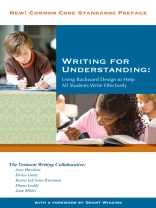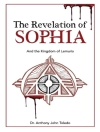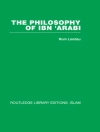Writing for Understanding is for teachers. The book lays out a manageable, effective approach to teacher planning so that students have access to all of those elements, especially the first three, before they sit down to write. Based on the principle of "backward design" (Wiggins and Mc Tighe), it conceptualizes planning for writing instruction in terms of key elements. These are: Central Ideas What is it that I want students to understand about this content? What understandings about the craft of writing do I want them to grasp? Focusing Question What question will I pose so that students can see how to approach this thinking/writing in a specific, appropriate, manageable way? Building and Processing Working Knowledge How am I going to make sure that students know enough about this subject by the end to actually be able to write about it? Structure How will my students know how to construct/build this piece of writing so that their thinking is clear, both to them as writers and to the readers of their work? Writing How will my students draft/revise so that their final writing is clearly focused, organized, and developed to show understanding of the central ideas? In the book, we will explain each of these elements in detail, making ample use of student work and teacher think-alouds as we go. In the Introduction, we lay out the argument for paying close attention to the role of understanding in the composition process. Chapter One takes a close look at what we mean by "effective writing" and explains the Writing for Understanding approach to planning and instruction in greater detail. In Chapter Two, we begin examining each planning element listed above, working with the idea of planning for a focus for student thinking and writing. Chapter Three explains the importance of planning for the acquisition of knowledge and understanding in both content and writing craft, and offers examples of what this can look like. In Chapter Four, we examine the role of structure in writing and show some ways in which teachers can plan for structure in writing. Chapter Five works with drafting and embedded revision (formative assessment on the part of both student and teacher). Chapter Six examines the question of transfer, moving away from guided instruction to more independent work. And transfer is the ultimate goal of Writing for Understanding: the point where students have internalized the ability to write effectively and can apply it in new situations. The authors of Writing for Understanding remind us throughout this thorough and practical book that the best writing depends upon clear and vital ideas about a subject – not simply practiced skill in stringing pretty sentences together. As the authors so succinctly put it, "Many problems in writing are really problems in understandng: students often know little about what they are trying to write."
The Vermont Writing Collaborative & Eloise Ginty
Writing for Understanding [EPUB ebook]
Using Backwards Design to Help All Students Write Effectively
Writing for Understanding [EPUB ebook]
Using Backwards Design to Help All Students Write Effectively
Acquista questo ebook e ricevine 1 in più GRATIS!
Lingua Inglese ● Formato EPUB ● ISBN 9781483511306 ● Casa editrice BookBaby ● Pubblicato 2008 ● Scaricabile 6 volte ● Moneta EUR ● ID 2963561 ● Protezione dalla copia Adobe DRM
Richiede un lettore di ebook compatibile con DRM












